|
Focke-Wulf Fw 190 D-13
Nordenham Production
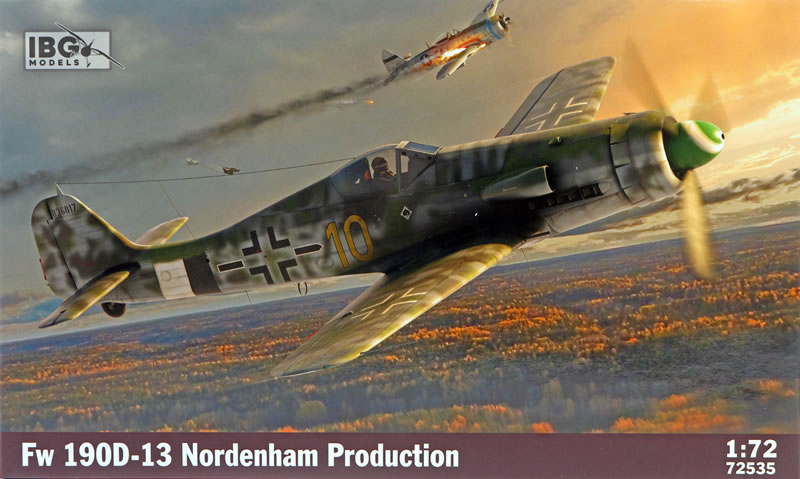
IBG, 1/72 scale
S
u m m a r y |
| Catalogue Number: |
IBG Kit No. 72535 - Focke-Wulf Fw 190 D-13 - Nordenham Production |
| Scale: |
1/72 |
| Contents and Media: |
88 parts in grey coloured plastic (22 not used); 45 photo-etched parts, five clear parts; two decal sheets with three marking options and full stencil data. |
| Price: |
Euro 23.50 plus shipping available online from IBG's webstore
GBP£22.50 EU Price (£18.75 Export Price) plus shipping available online from Hannants |
| Review Type: |
FirstLook |
| Advantages: |
Quality mouldings, decals and PE, with excellent details in all areas, especially the fine surface panels and lines - just gorgeous. Interesting choice of decals. |
| Disadvantages: |
None noted apart from the care needed in folding some of the photo-etched parts. |
| Conclusion: |
This really is a wonderful kit, beautifully moulded and detailed with excellent photo-etch and heartily recommended to the modeller of aeroplanes of the other Axis powers. |
Reviewed by
Graham Carter

The inline-engined variants of the fabled Focke Wulf 190 fighters only reached front-line service in the final months of WWII, despite the initial designs dating from late 1941. Airframe, engine technical issues and Air Ministry indecision were largely to blame for the protracted development period and it was not until late 1944 that the D-9 variant with the lengthened rear fuselage was in production.
Intensive development of the Jumo engine then led to variants D-10 to D-15, with only the D-11 and D-13 reaching production in 1945.

Despite somewhere around 1,500-1,700 D variants being produced, it is thought that fewer than 900 were taken over by the Luftwaffe and fewer still reached combat units.
IBG's newest Dora kit represents an example of one of the small number of D-13 variants produced at Nordenham that reached the front lines and were found abandoned at the end of the war.
(Info from the instruction sheets)
IBG is a Polish company that made its name with a splendid range of military vehicles in 1/72 but has branched out into aircraft over the past couple of years, producing range of beautifully moulded and detailed aeroplanes. Previous FW releases have included a D-9, D-11 and a What-if D-15. This kit arrives in the familiar sturdy top-opening box with a fine CAD rendition of one of the decal choices besting P-47 on top. Inside are seven clear plastic sleeves containing single grey plastic sprues, another with the transparencies, a PE fret, two nice decal sheets for three examples, and a stapled A4 16-page instruction booklet.
A parts map on page two shows that 22 parts are not needed for this variant but are used in some of the other variants that IBG has or will release. A substantial colour table lists paints for Vallejo Model Air, Hataka, Life Colour, Mr Hobby and AK Interactive numbers. No enamels there. Colours are named with RLM numbers where necessary. A drawing shows the paint and decal details for the engine, undercarriage, tank, propeller and interior - very thorough.
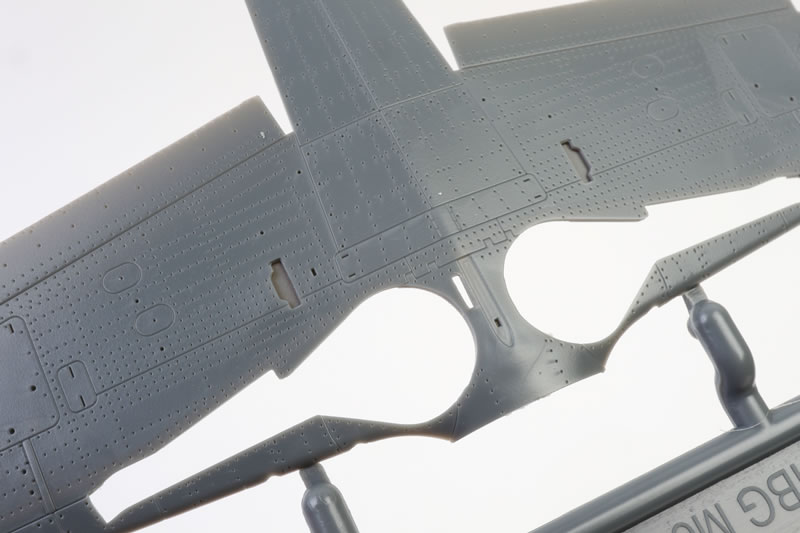
The parts are crisply moulded in grey plastic and there is no sign of flash or dimpling, although its short-run nature means there are no locating holes/pins so care will be needed in alignment during assembly. Surface detail is extraordinarily fine and will look fabulous under a coat of paint. Fine cockpit and undercarriage details are also very well produced.

The engine and its mounts are made up from 19 parts make up. It is nice to know it is there but I was concerned that all that detail might result in difficult fit. However, a search of the Internet hasn't come up with any tales of terror, so just take your time and test fit and you should be fine.
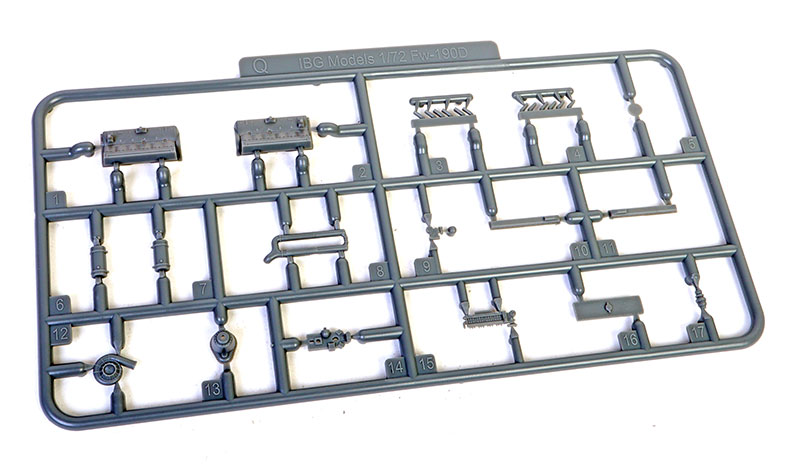
The modeller could mount the engine on a stand I suppose but otherwise it is all hidden inside the closed fuselage. This is just me personal view and certainly does not detract from a splendid rendition of the power-plant.
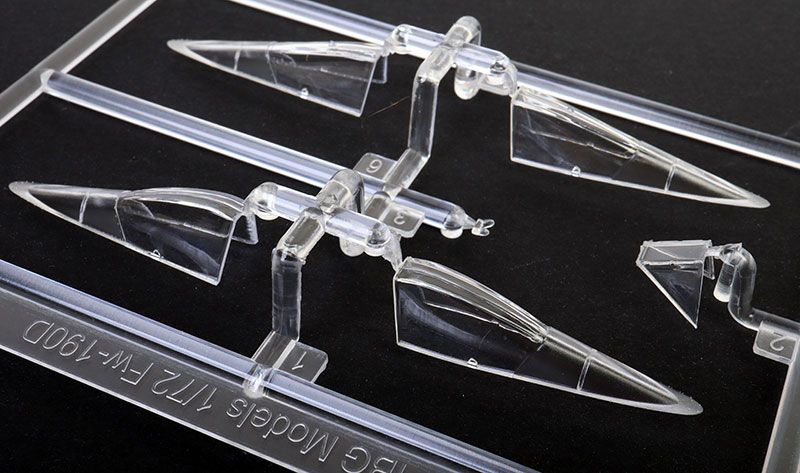
The cockpit is a finely detailed drop-in set of past that uses decals for the instrument panels and PE for pedals, levers and seat belts. A thoughtful addition is a spar attached to the front bulkhead to simplify the attachment and angles for the wings. Areas of special care are highlighted in bright orange and include points about cockpit tub location, additional scribing for this variant (using a PE stencil) and modifications to the rudder aerial.
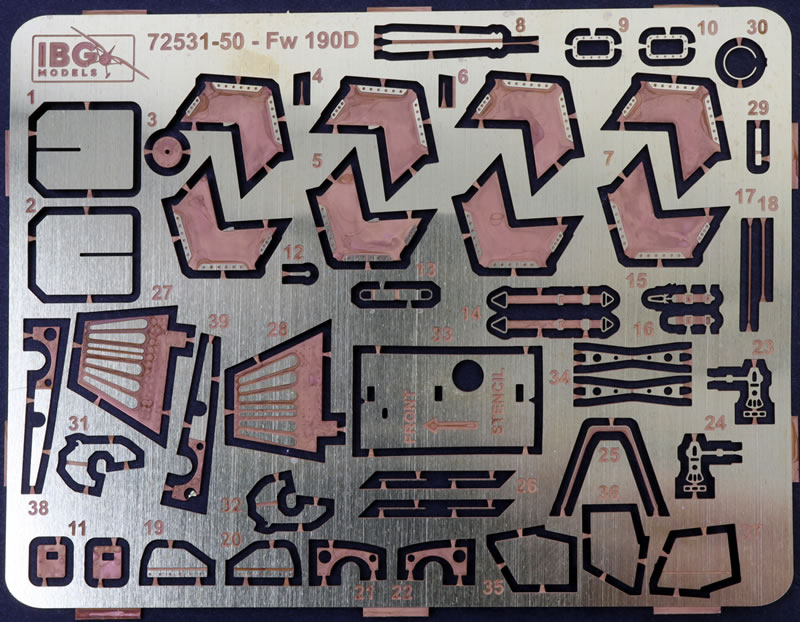
Thoughtful points as well are the notes that some parts can be added at the end of construction to avoid damage. Separate ailerons, rudder and elevators allow the modeller to add interest by posing the aircraft with altered control surfaces. The canopy is detailed with a mix of plastic and photo-etched parts representing internal structures. A couple of final drawings how the aerial locations and stencil decal positions.
Markings
The final three pages of the instructions consist of four-view colour drawings of the three decal choices:-
-
Wk.Nr 836015 found at Gardelegen in May 1945 in RLM 81/82 which wraps around the front third of the lower wings, over 76 and ‘silver’ which I think should be natural metal and no other markings,
-
Wk. Nr 836016, Black double chevron, possibly of Stab JG/26 found at Pilsen-Bory Czechoslovakia in May 1945 in the same scheme, and
-
Wk.Nr 836017, Yellow 10, ‘ - + -‘, of Stab/26 found at Flensburg in May 1945 in the same scheme but with mottles down the fuselage sides and black and white lower rear fuselage stripes and a green spinner with a white spiral.

The decals are well printed, in perfect register, good density and on mid-blue paper to ease the search for white markings.
There is a pair of mystery chevrons and a fourth werknummer, 836018, on the sheet but no location for them in any drawings!

Swastikas are provided in divided forms and myriad stencils are provided to keep you occupied for a few hours, although I am not sure that they would all be applied so late in the war.
This really is a great replica of this, fortunately too late, fighter and one that I heartily recommend to the modeller of Luftwaffe aeroplanes.
Thanks to IBG for the sample
Review Text Copyright © 2023 by Graham Carter
Review Images Copyright © 2023 by Brett Green
Page Created 17 April, 2023
Last updated
20 April, 2023
Back to HyperScale Main Page
Back to Reviews Page
|
